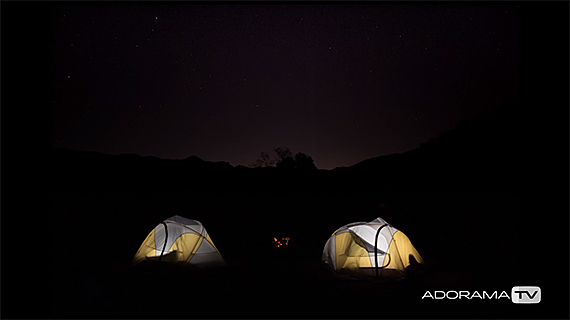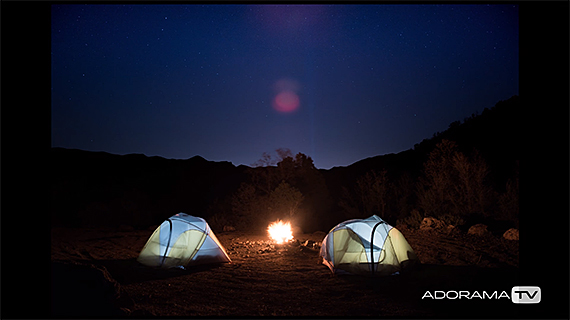Whether you’re a professional landscape and nature photographer or you’re just taking pictures of your family camping trip, you have to think about your environment to get the perfect shot. This is especially true when you’re shooting long exposures at night, which is a really great way to capture the camping atmosphere. Watch as Daniel Norton creates and shoots a glowing campsite and fire at night in the desert near Lovell Canyon, Nevada:
Shooting nighttime long exposures is a cool and unique way to add ambiance to your camping scene. You don’t just want to use the flash on your camera if it’s dark, or set your camera to a high ISO and use a long shutter speed—these methods won’t give you the control you need to create the right mood. Instead, you can simply add in a few lights to certain areas of your scene to get the look and feel you want.
Here, Norton uses a couple Flashpoint LED lights, placing one in each of the tents. Since he wanted the final image to have a glow from the sky as well, the lights in the tents needed to be covered with paper towels to dim them a bit, as to not overpower the sky glow and stars.
For the same reason, capturing the fire against a low glowing sky can be tricky. Build the fire up and shoot several exposures to see what you come up with. As Norton shoots, some of the images turn out with a lens flare because the fire is so bright.
To get the right exposure for this scene, Norton exposes for the sky. He sets his camera (Nikon D810 with a Nikon AF-S Nikkor 24-70mm f/2.8 ED VR Lens) on a tripod for a long exposure of 15 seconds, at f/7.1 and ISO 400. Since he can’t control the sky, it is the most important thing to focus on. Everything else—the lighting of the tents, the size and brightness of the campfire—can be controlled to work around the sky.
Like This Article?
Don't Miss The Next One!
Join over 100,000 photographers of all experience levels who receive our free photography tips and articles to stay current:








Leave a Reply